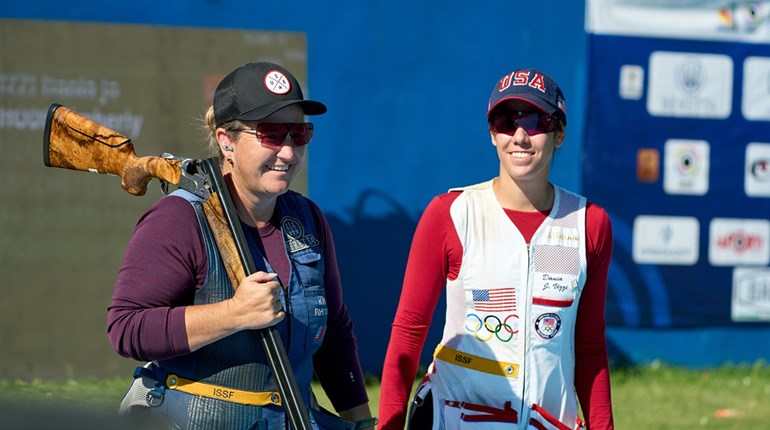
This article, "The Ballester-Molina Pistol," appeared originally as a Classics column in the November 2017 issue of Shooting Illustrated. To subscribe to the magazine, visit the NRA membership page here and select Shooting Illustrated as your member magazine.
When Argentina decided to adopt a self-loading pistol for its military, it chose wisely. At first, the country purchased .45 ACP 1911 variants directly from Colt in Hartford, but then eventually commenced domestic production of the M1911A1 design as the 11.25 mm Sistema Colt 27. Argentina’s Dirección General de Fabricaciones Militares (the General Directorate of Military Manufacturing, or “DGFM”) made these pistols at the Fábrica Militar de Armas Portátiles (Military Small Arms Factory, or “FMAP”) in Rosario, 200 miles upriver from Buenos Aires. Although the Sistema 27s provided reliable service, they were costly to make and, even after a decade of production, there still weren’t enough of them. So, work started on what would become the Ballester-Molina pistol.
Dr. Arturo Ballester Janer and Eugenio Molina—two Spanish entrepreneurs who established the firm Hispano Argentina Fábrica de Automóviles S.A.—also known as HAFDASA, gave the Ballester-Molina pistol its name. Through the efforts of the company’s chief engineer, Rorice Rigaud, HAFDASA developed a pistol combining elements of Browning’s 1911 series with elements of the Spanish Star Model P. Noticeably, the 1911’s grip safety was replaced with a solid backstrap. In addition to that, the new HAFDASA .45-caliber semi-automatic featured a pair of vertically grooved wooden grips, a hammer-blocking thumb safety, and an inertial firing pin that made it possible to safely lower the hammer on a loaded chamber.

Although these features set it apart from Browning’s 1911, HAFDASA’s new pistol was almost identical in size, shape, caliber and operating principle. In fact, it was even designed to use the same seven-round detachable-box magazine, barrel and recoil springs. Nevertheless, the new HAFDASA .45 ACP was not a total copy of the Colt .45 ACP—the slides from the two pistols do not interchange.

During the first three years of production, the gun was roll-marked with the name “Ballester-Rigaud” but then in 1940 it was given the name that is more familiar to modern shooters and collectors—”Ballester-Molina.” Initially, the Argentine government was the only user of the Ballester-Molina pistol, issuing the pistol to its military, federal police and customs service, but that changed soon after the Dunkirk evacuation in 1940. The U.K. had to contend with a shortage of pistols after Dunkirk, and ordering Ballester-Molina pistols from HAFDASA helped relieve that situation.
Since Colt M1911A1 pistols were in widespread use in the King’s service and Colt could not keep up with demand, purchasing the Ballester-Molina pistol represented a sensible choice. It used the same holsters, magazines and ammunition as the Colt .45, so issuing the HAFDASA .45 would not introduce new accessories to the logistical chain. By war’s end, the U.K. had purchased over 10,000 guns—many of which ended up being used by the Special Operations Executive (SOE) for clandestine operations. These British contract Ballester-Molinas carry serial numbers that begin with a ‘B’ prefix and fall below 21,000.
In the aftermath of World War II, the Ballester-Molina remained in production and in service. Then, in 1953 HAFDASA went out of business after having manufactured 113,000 guns. Although the assembly line had stopped running, pistols could still be found in military and police inventory even as Argentina transitioned to the Browning Hi Power 9 mm. Some Ballester-Molina pistols even armed Argentine troops during the invasion and occupation of the Falkland Islands in 1982.
But, after nearly 50 years of federal service, the pistol was finally retired. Even before that point, though, HAFDASA’s robust .45 semi-auto was already being imported into the U.S. as military surplus beginning the 1960s. Although it offers a more-affordable alternative to the military-surplus 1911, the Ballester-Molina pistol is nevertheless an outstanding design in its own right.




































